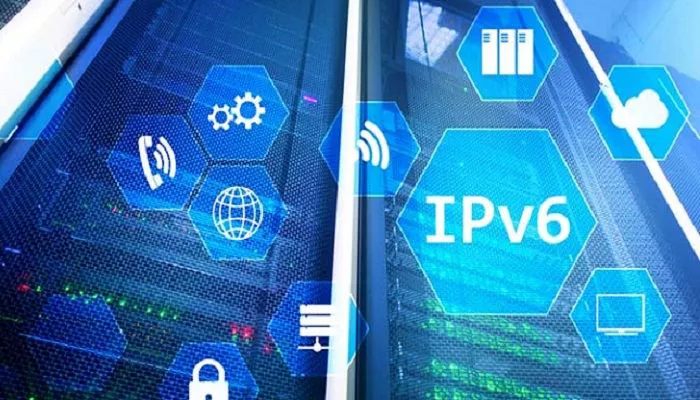The internet is growing rapidly. More devices are connecting every day—smartphones, laptops, smart TVs, and even refrigerators. Each of these devices needs a unique address to communicate online. This address is called an IP (Internet Protocol) address.
The original system, IPv4, has been in use since the 1980s. However, it has a limited number of addresses—about 4.3 billion. With the explosion of internet-connected devices, we’ve run out of IPv4 addresses. To solve this problem, a new system called IPv6 was developed.
What is IPv6?
IPv6 stands for Internet Protocol version 6. It’s the latest version of the Internet Protocol, designed to replace IPv4. IPv6 was developed by the Internet Engineering Task Force (IETF) to address the limitations of IPv4, primarily its limited address space.
Why Do We Need IPv6?
1. Address Exhaustion
IPv4 uses 32-bit addresses, allowing for approximately 4.3 billion unique addresses. With the rapid growth of the internet, this number is no longer sufficient. IPv6 uses 128-bit addresses, providing a virtually unlimited number of unique addresses—about 340 undecillion (that’s 340 followed by 36 zeros).
2. Simplified Network Configuration
IPv6 allows devices to automatically configure themselves when connected to a network. This feature, called Stateless Address Autoconfiguration (SLAAC), simplifies network management and reduces the need for manual configuration.
3. Improved Security
IPv6 was designed with security in mind. It includes built-in support for IPsec (Internet Protocol Security), which provides data encryption and authentication at the IP layer. This enhances the security of data in transit.
4. Better Performance
IPv6 has a simplified header structure compared to IPv4. This streamlined design improves packet processing efficiency, leading to better performance and faster data transfer speeds.
Key Features of IPv6
1. Vast Address Space
As mentioned earlier, IPv6 provides a massive number of unique IP addresses. This vast address space ensures that we won’t run out of IP addresses anytime soon, accommodating the growing number of internet-connected devices.
2. Simplified Header Format
IPv6 has a fixed 40-byte header, compared to IPv4’s variable-length header. This simplification reduces the processing burden on routers and improves overall network efficiency.
3. Built-in Security
IPv6 integrates IPsec as a fundamental component, providing end-to-end encryption and authentication. This built-in security helps protect data and ensures secure communication between devices.
4. Auto-Configuration
With SLAAC, IPv6-enabled devices can automatically generate their own IP addresses upon connecting to a network. This feature simplifies network administration and reduces the likelihood of configuration errors.
5. Improved Multicast and Anycast
IPv6 enhances support for multicast (sending data to multiple destinations simultaneously) and introduces anycast (sending data to the nearest node in a group). These features optimize data delivery and reduce network congestion.
6. No Need for NAT
Network Address Translation (NAT) is commonly used in IPv4 networks to allow multiple devices to share a single public IP address. IPv6’s vast address space eliminates the need for NAT, enabling true end-to-end connectivity.
IPv6 vs. IPv4: A Comparison
| Feature | IPv4 | IPv6 |
|---|---|---|
| Address Length | 32 bits | 128 bits |
| Address Format | Decimal (e.g., 192.168.1.1) | Hexadecimal (e.g., 2001:0db8::1) |
| Total Addresses | ~4.3 billion | ~340 undecillion |
| Header Complexity | Complex and variable | Simplified and fixed |
| Security | Optional (IPsec) | Built-in (IPsec mandatory) |
| Configuration | Manual or DHCP | Auto-configuration (SLAAC) |
| NAT Required | Yes | No |
| Broadcast Support | Yes | No (uses multicast instead) |
| Mobility Support | Limited | Improved |
Transitioning from IPv4 to IPv6
The transition from IPv4 to IPv6 is a gradual process. Both protocols currently coexist on the internet. Several methods facilitate this transition:
1. Dual Stack
Devices run both IPv4 and IPv6 protocols simultaneously. This allows communication over both networks and ensures compatibility during the transition period.
2. Tunneling
IPv6 packets are encapsulated within IPv4 packets to traverse IPv4 networks. This method enables IPv6 communication over existing IPv4 infrastructure.
3. Translation
Network devices translate between IPv4 and IPv6 protocols, allowing communication between IPv4-only and IPv6-only devices.
Challenges in IPv6 Adoption
Despite its advantages, IPv6 adoption has been slow due to several factors:
- Infrastructure Costs: Upgrading network infrastructure to support IPv6 can be expensive and time-consuming.
- Compatibility Issues: Some legacy systems and applications may not be compatible with IPv6.
- Lack of Immediate Benefits: For many users, the benefits of IPv6 are not immediately apparent, leading to a lack of urgency in adoption.
Conclusion
IPv6 is the future of internet addressing. It resolves the limitations of IPv4 and provides a scalable, secure, and efficient framework for the growing demands of the digital world. While the transition may take time, embracing IPv6 is essential for the continued evolution and expansion of the internet.

